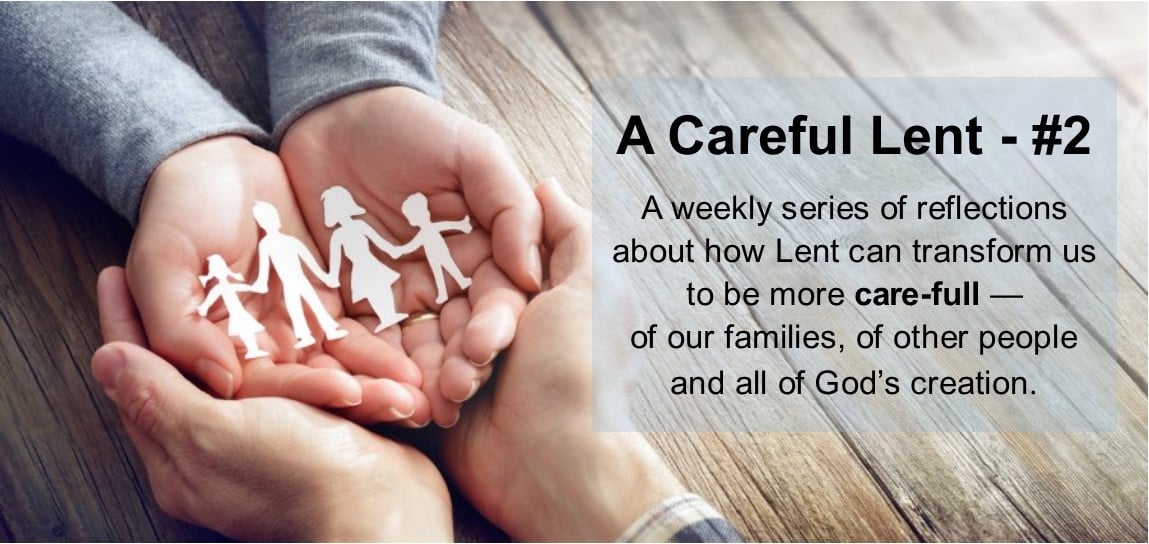
Why pray? | Seasonal Reflections
Last week we recalled the traditional Lenten practices: Prayer, Fasting, and Almsgiving. This week, we focus on prayer. We ask the Lord to draw us to a deeper and broader vision of care for others and the world.
In the Gospels, Jesus was moved with compassion for the crowds (Matthew 9:36). He embraced the poor, the sick, and those who were outcast, offering them hope in a God who loved them. The crowds came to Jesus, and He taught them, healed them, forgave them, and cast out the demons that afflicted them. Our Lenten prayer can help us see and hear the Jesus who cares for, loves, and ministers to His people, “the least of these,” (Matthew 25:40).
Prayer opens us to God’s Spirit, energizing our capacity to care, following the example of Jesus (Philippians 2:5). Jesus revealed God as Father, making all of us sisters and brothers. We are one human family, transcending the differences between us (Galatians 3:26-28). Human solidarity springs from God’s vision of all His people living together in peace and justice. Human solidarity is a theme from Catholic Social Teaching.
There are many different prayer forms and styles in Christian tradition. The “right” prayer method is the one we choose that draws us closer to God.
Here are just two forms:
One method is to read a Gospel story from the public ministry of Jesus and use our imagination to “paint” the scene in our mind and engage our senses – placing ourselves into the story. We can pray that God’s Spirit will lead our reflection. In the family, we can share the reading of the sacred text and the thoughts and feelings that arise from our imagining. Our closing prayer could simply be a prayer of gratitude for how the story affected us.
 Another prayer method is to pray the Rosary as a family. Venerable Patrick Peyton tirelessly promoted the praying of the Rosary as a source of grace for family unity and peace in our world. The Rosary celebrates God’s care for the individual family and the entire human family. Father Peyton’s message encourages us, “The Family That Prays Together Stays Together.”
Another prayer method is to pray the Rosary as a family. Venerable Patrick Peyton tirelessly promoted the praying of the Rosary as a source of grace for family unity and peace in our world. The Rosary celebrates God’s care for the individual family and the entire human family. Father Peyton’s message encourages us, “The Family That Prays Together Stays Together.”
The repetition of the Hail Mary in the Rosary lets us rest and reflect on the mystery of the Incarnation – God with us. The Hail Mary brings together the voices of the angel Gabriel, Mary’s relative Elizabeth, and our own. The prayer reflects God’s love, the family, and our needs in the light of Mary’s faithful acceptance of God’s care for her and all humanity.
Some other thoughts on prayer that may be helpful:
Additional resources for families:
Busy families can download free apps to learn to pray the Rosary or accompany their family prayer ... and use wherever they are!
View and discuss the short 5-minute video, Prayer, on Catholic Central by Family Theater Productions, a ministry of Holy Cross Family Ministries.
John Dacey is a retired Catholic high school teacher. He has taught Scripture, Ethics, and Social Justice. He enjoys being in the company of family, reading in the field of spirituality, and gardening. John and his wife have been married for more than 40 years and have two children and four grandchildren.
